A suitcase full of photographic wonder
- Published
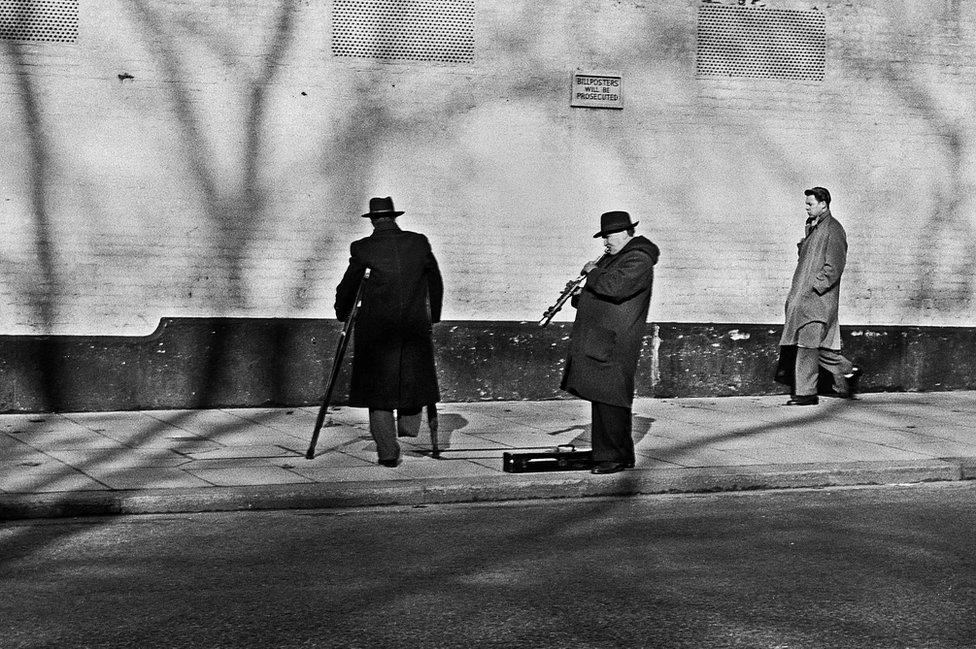
It's not often you are sent a set of pictures that make you gasp, especially ones taken decades ago. Yet here they are, beautiful black and white pictures that have remained hidden, buried in a loft waiting to be brought out into the light.
These pictures were taken by John Turner, a property manager based in the centre of London, and were recently unearthed by his daughter and her husband, Liz and Martin Carroll.
Following John Turner's death in 1987 a suitcase was passed to them by his widow, Betty. A quick glance revealed family photos and other pictures taken for his camera club, and it was consigned to the loft for 30 odd years.
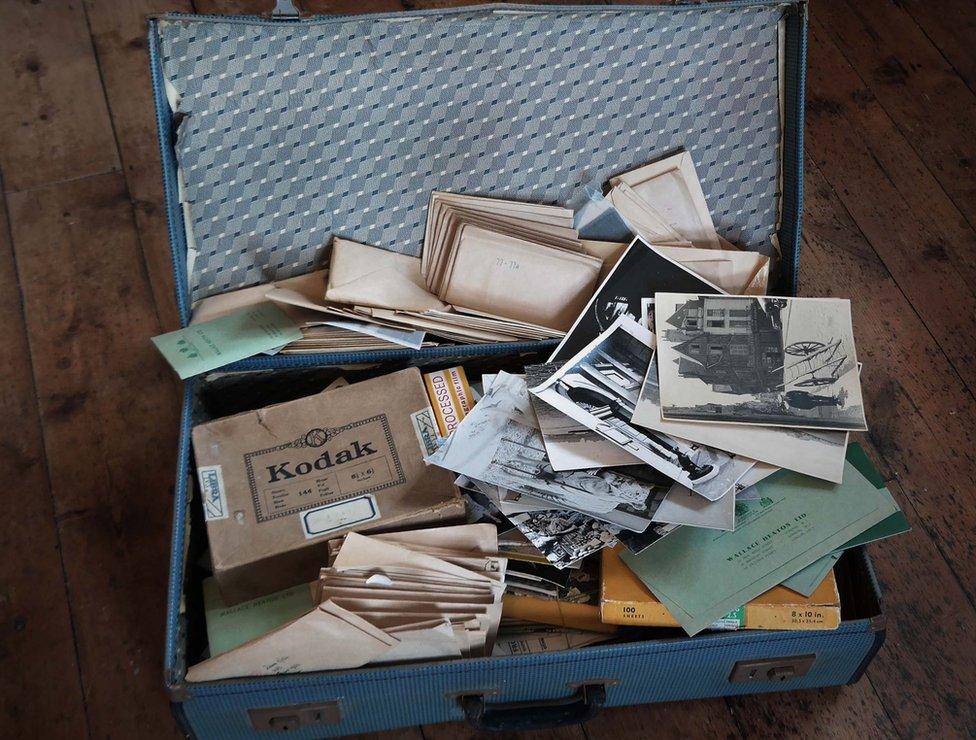
"Having a clearout last year, I started going through the case to weed out family photos worth saving," says Martin Carroll who used to work as a commercial industrial photographer. "To my astonishment, I found I was pulling out one great image after another."
It is believed the pictures were taken while Turner worked as a property manager, snatched as he travelled from one location to another.
Martin and Liz are unsure as to whether her father showed the work to anyone - but now they are out of the loft, I'm sure many will want to view them.
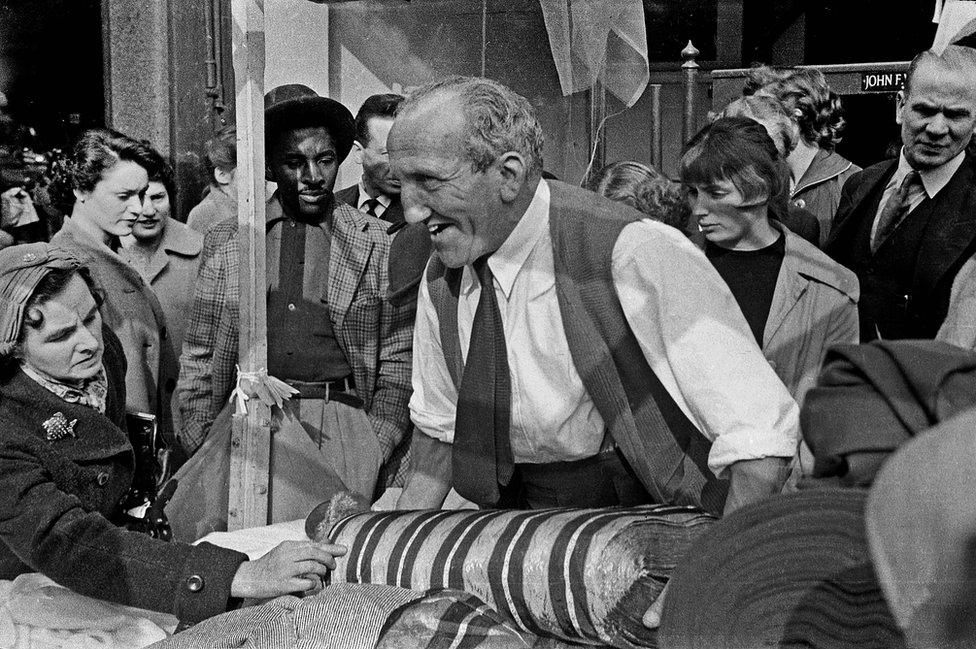
Berwick Street Market, Soho, London, 1957
They feel the photographs really deserve to see the light of day, and for John to be appreciated for the talented photographer that he was. They also hope to arrange an exhibition of his work at some point.
"We should add that, having gone through all the negatives, that he seemed only ever to take just the single frame of each subject - nailing it in one, as it were," says Martin.
Martin has been scanning the original negatives as many of the pictures were not printed, just the contact sheets, providing a glimpse into John Turner's work.
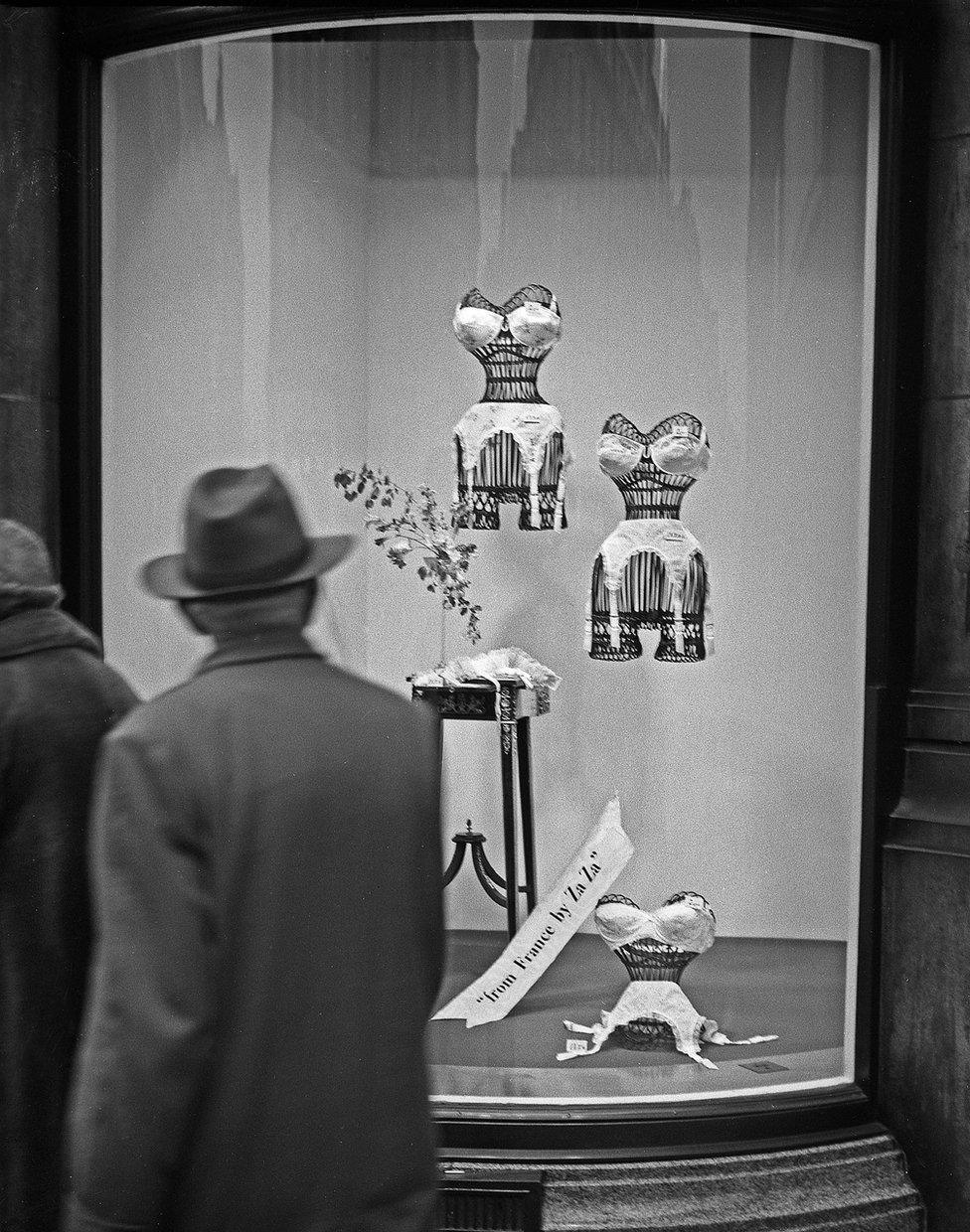
Bond Street, London, 1960
Turner worked with a variety of formats from 35mm through to 6cmx9cm roll film, using folding cameras a lot, as well as a Leica and a Rollei.
His daughter Liz feels they capture the real John Turner.
"These pictures are who I think he really was," she says. "They show his artistic talent that was hidden."
Liz told me that as a young man in the 1930s her father lived in the heart of London, Carnaby Street, and lived a "bohemian life". He would regularly set off dressed in a dark blue shirt and yellow tie to Paris on the boat train, the Golden Arrow.
Once married, he settled into a steady job and as Liz puts it, wore the "bowler hat".
He always had a camera to hand, but Liz was only aware of his pictures taken for the local camera club in Bromley, which were of a more conventional nature for that period.
His pictures offer a wonderful glimpse into pre-War London, and beyond. His ability to capture a telling moment is indisputable, as these pictures show.
His daughter Liz has an idea as to why.
"Found in his possessions when he died was the catalogue for the first surrealist exhibition in London, during the 1920s," she says.
"Maybe seeing that encouraged his eye for the quirky?"
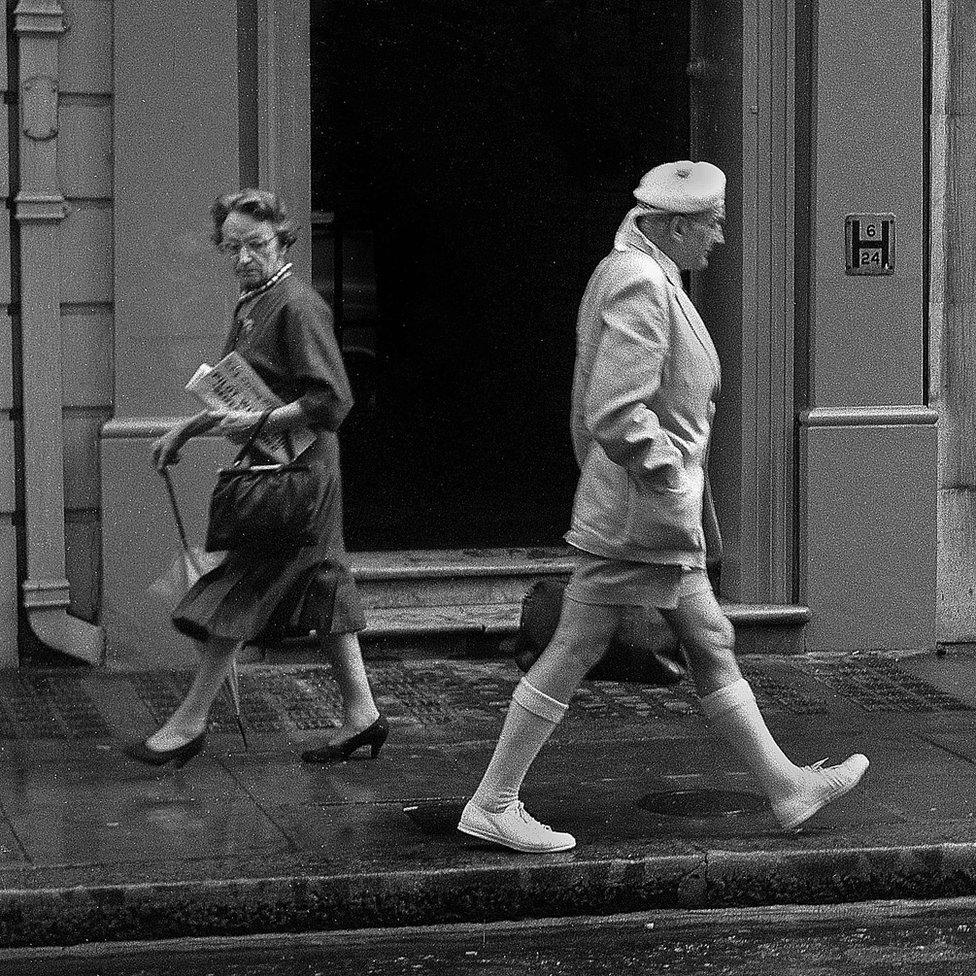
Passing in the street, London, 1956
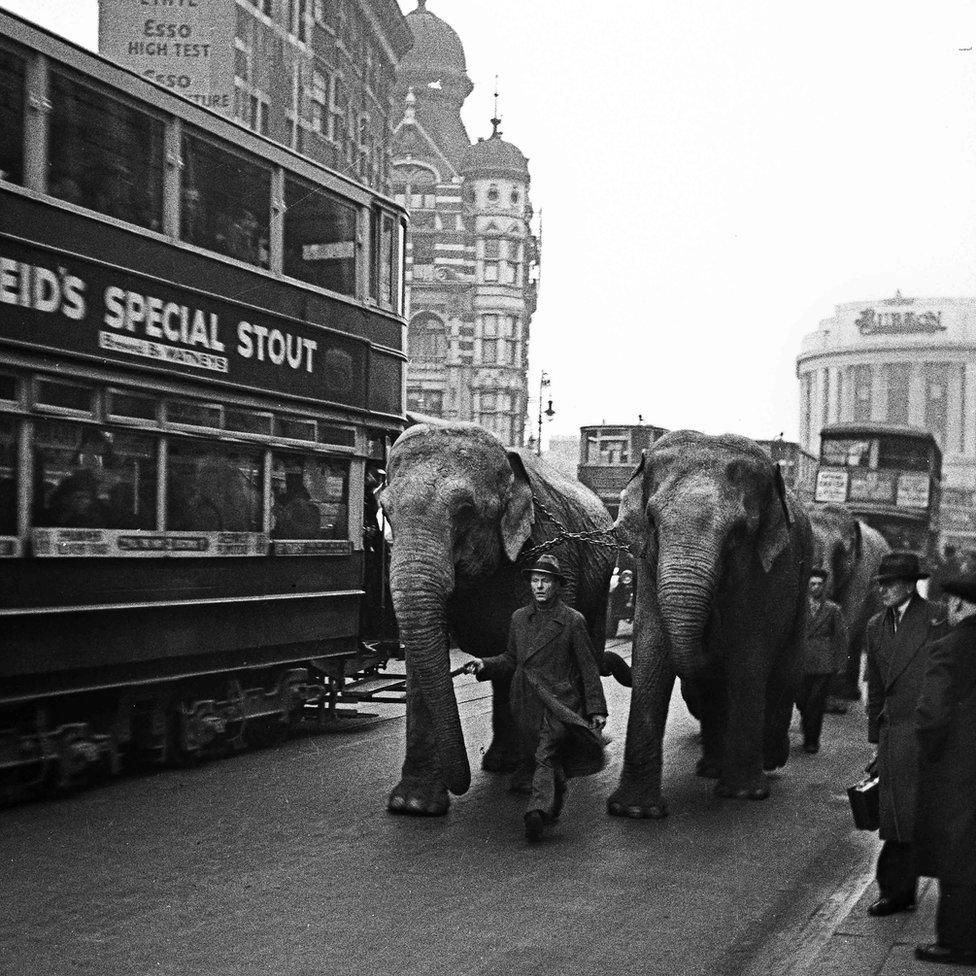
The circus arrives in town, London, 1937

East End of London, 1949
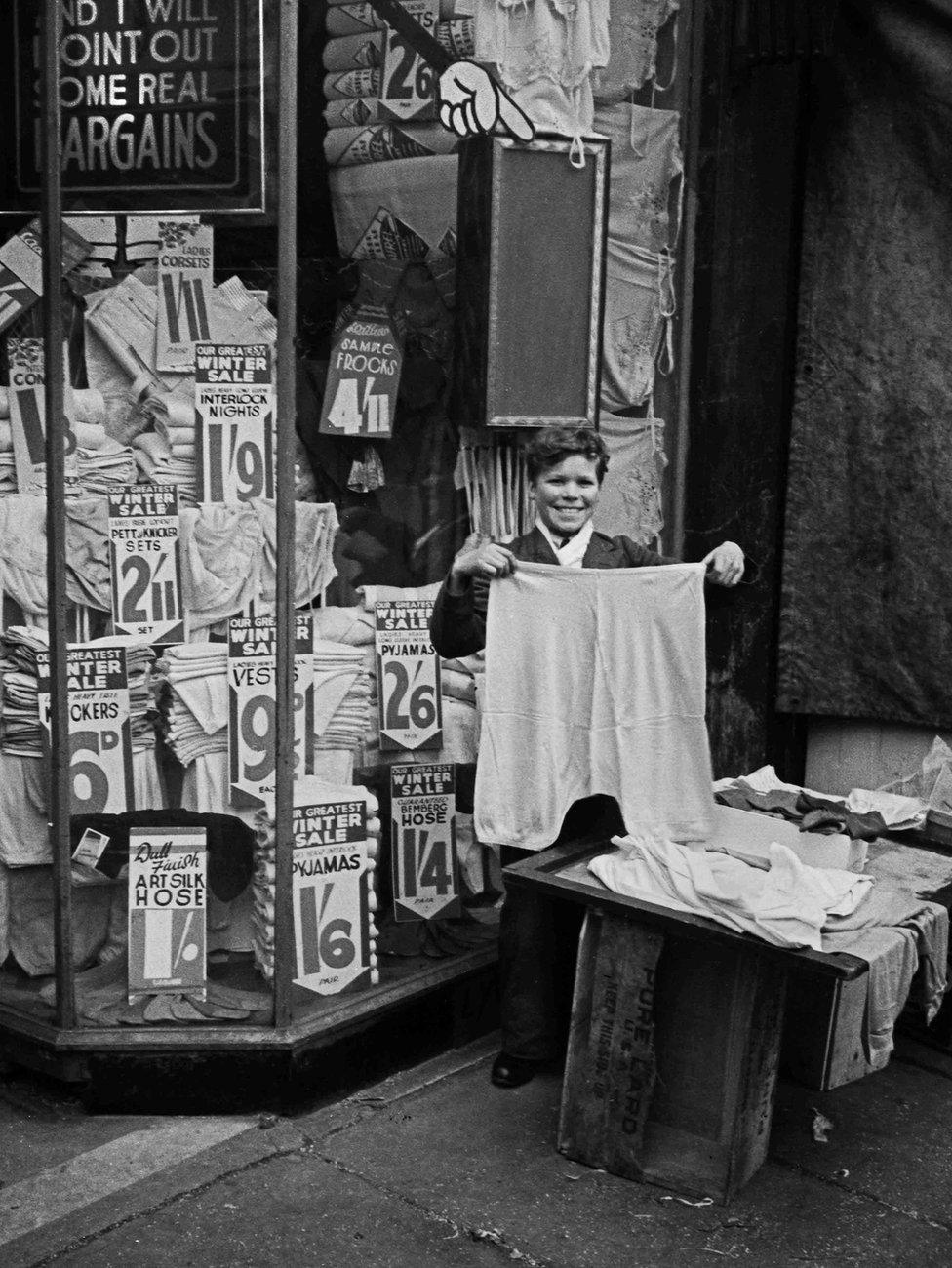
Haberdasher's, Canning Town, London, 1938

Hardware shop, 1957
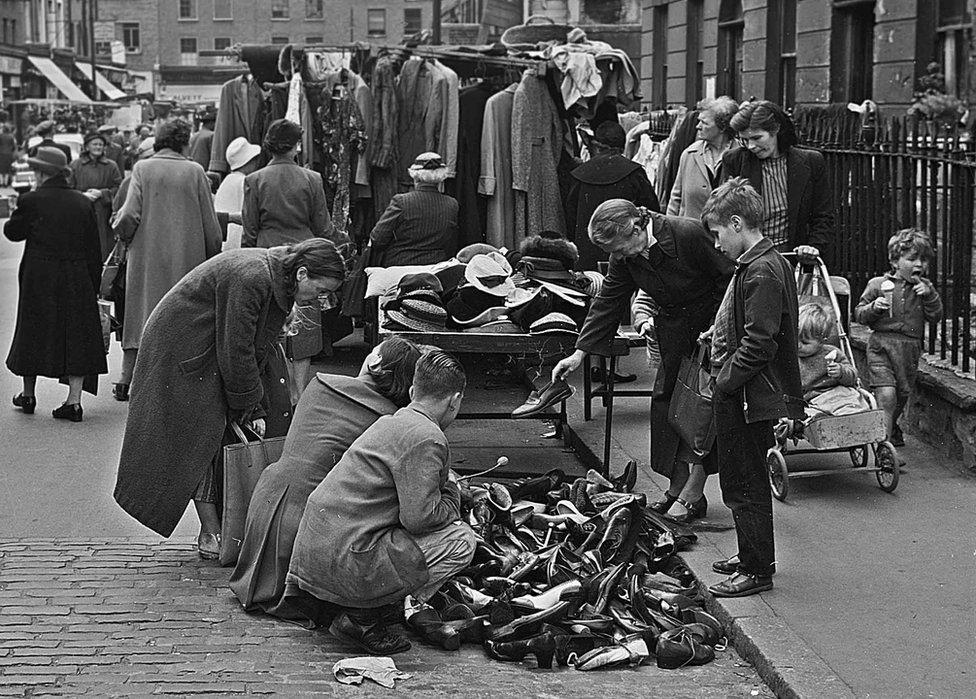
A market in London's East End, 1940
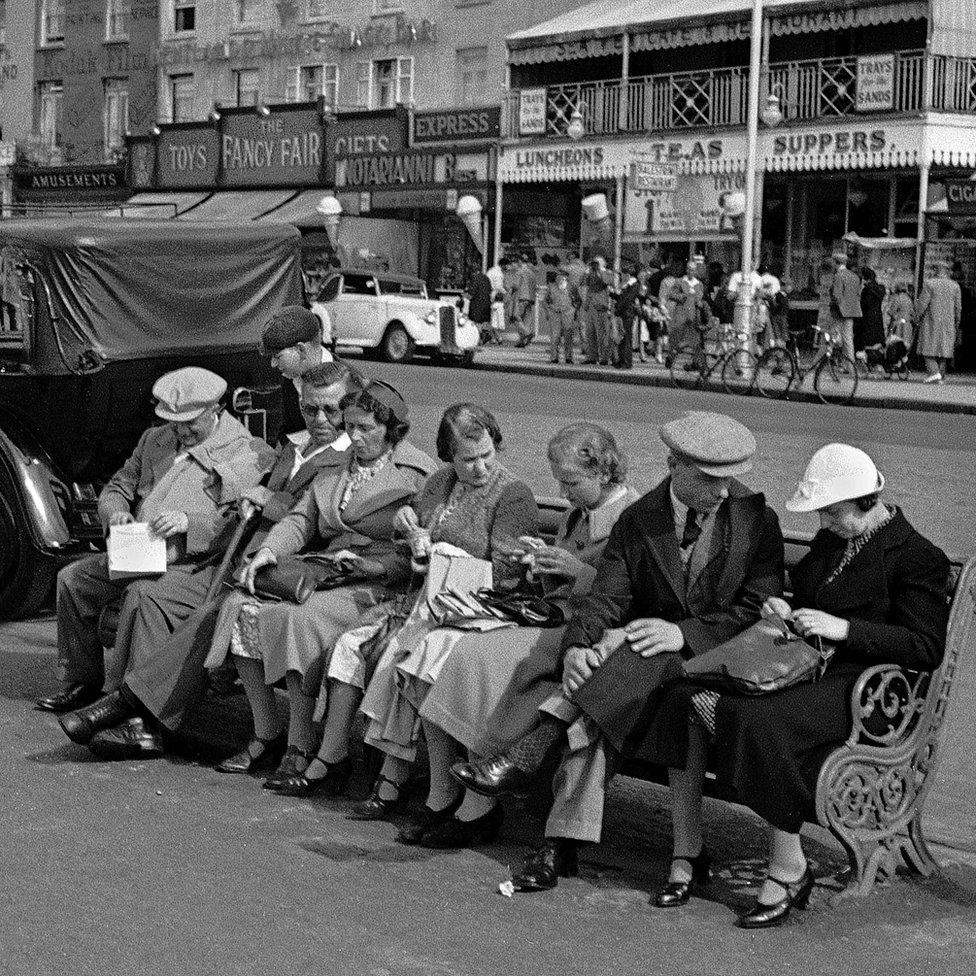
A trip to the seaside, Margate, 1938
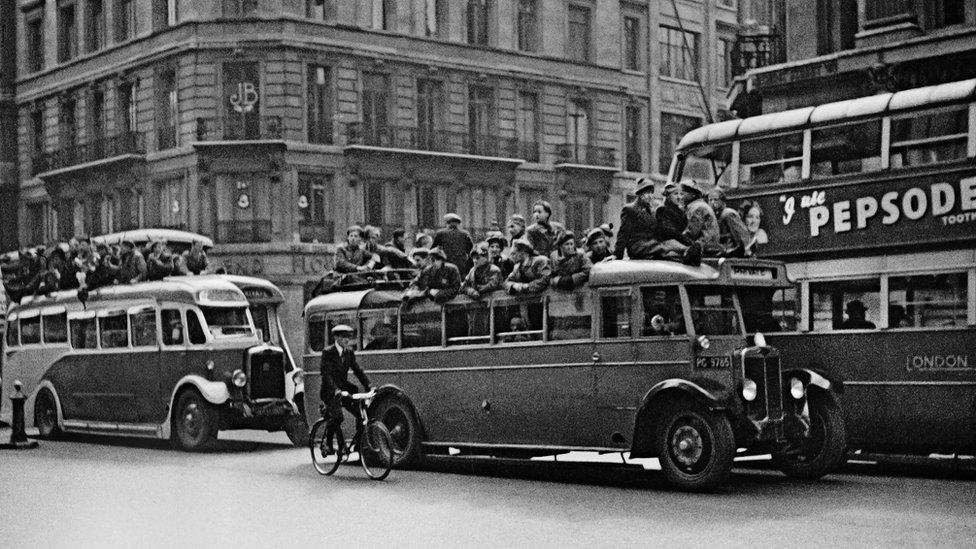
It's cup final day in 1936, when Arsenal took on Sheffield United. The Londoners came out on top, winning 1-0
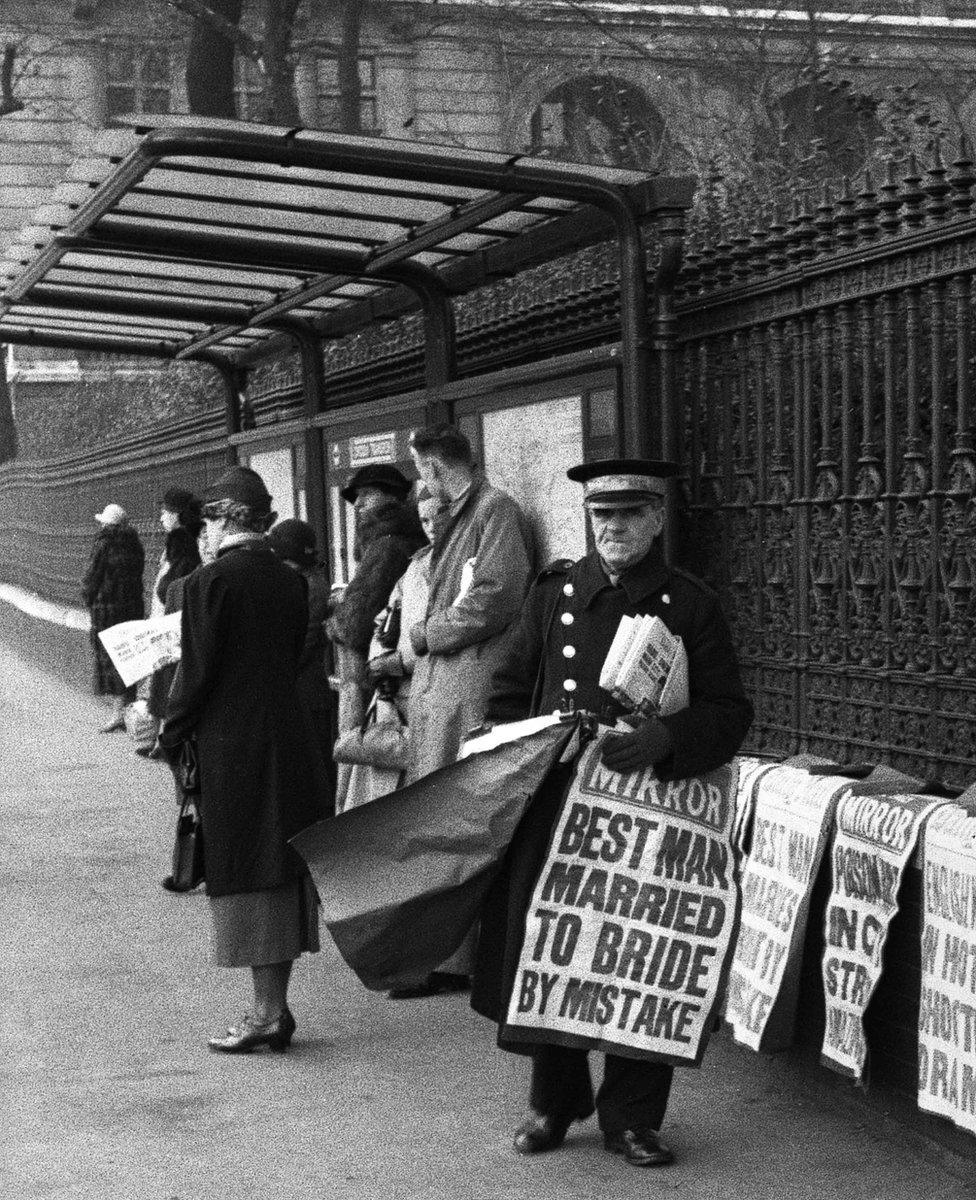
Newspaper seller on Horse Guards Avenue, London, 1937
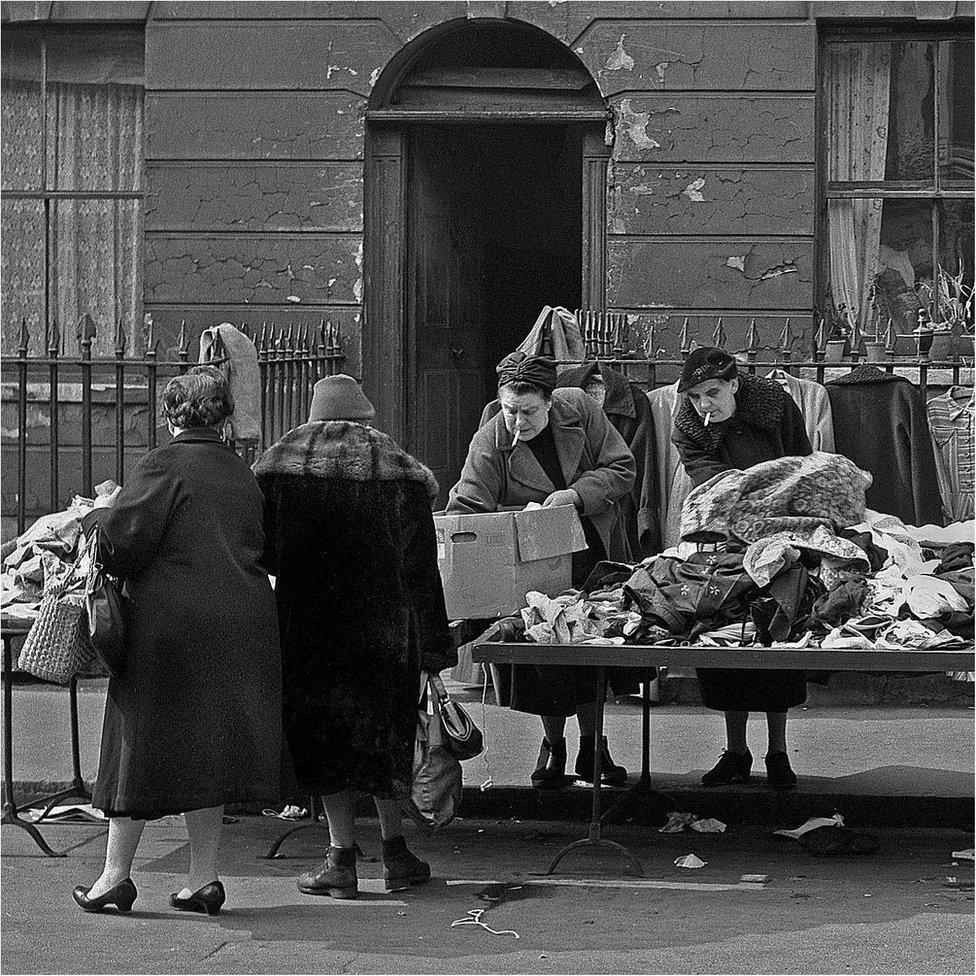
Sorting out clothes at a market

Crushed car, Howland Street, London, 1958
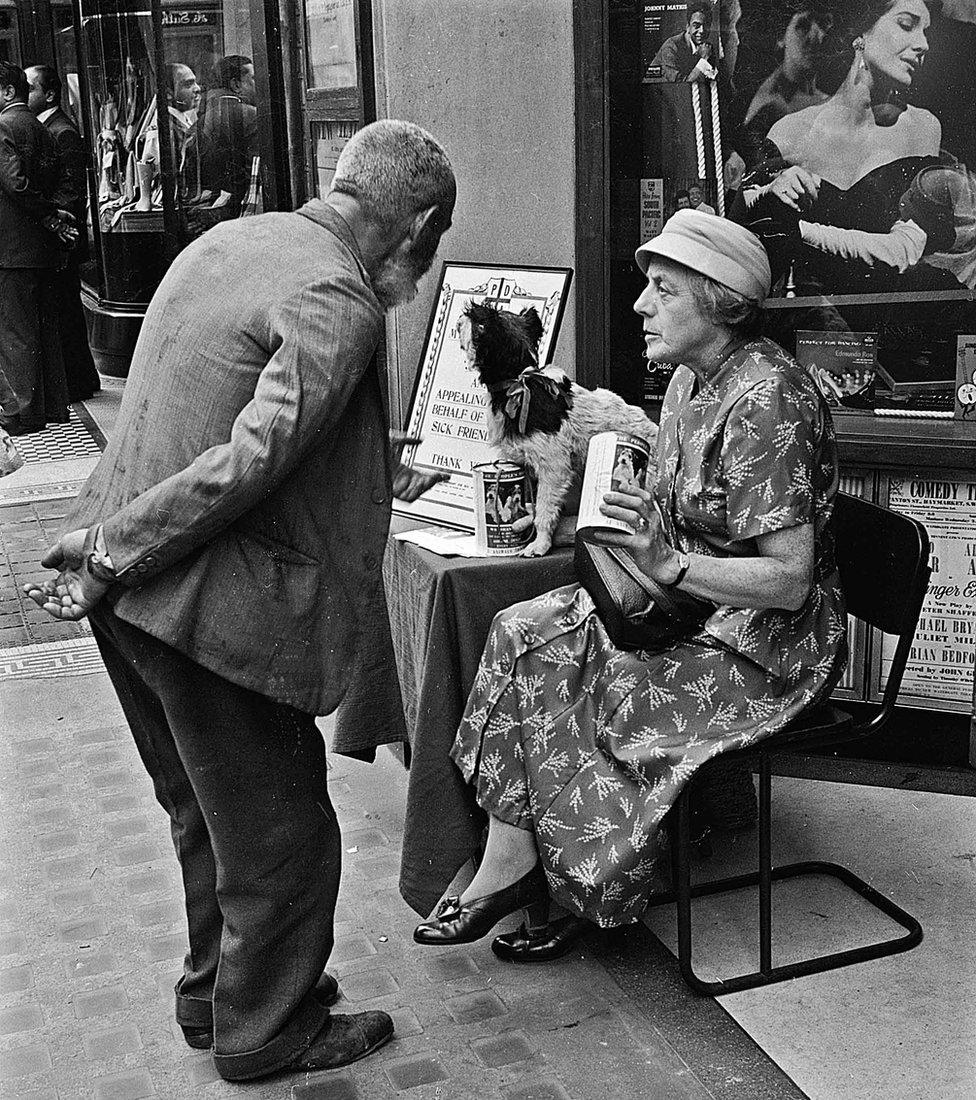
A woman collecting for the PDSA charity, Regent Street, London, 1955

Up and down on Regent Street, London, 1965
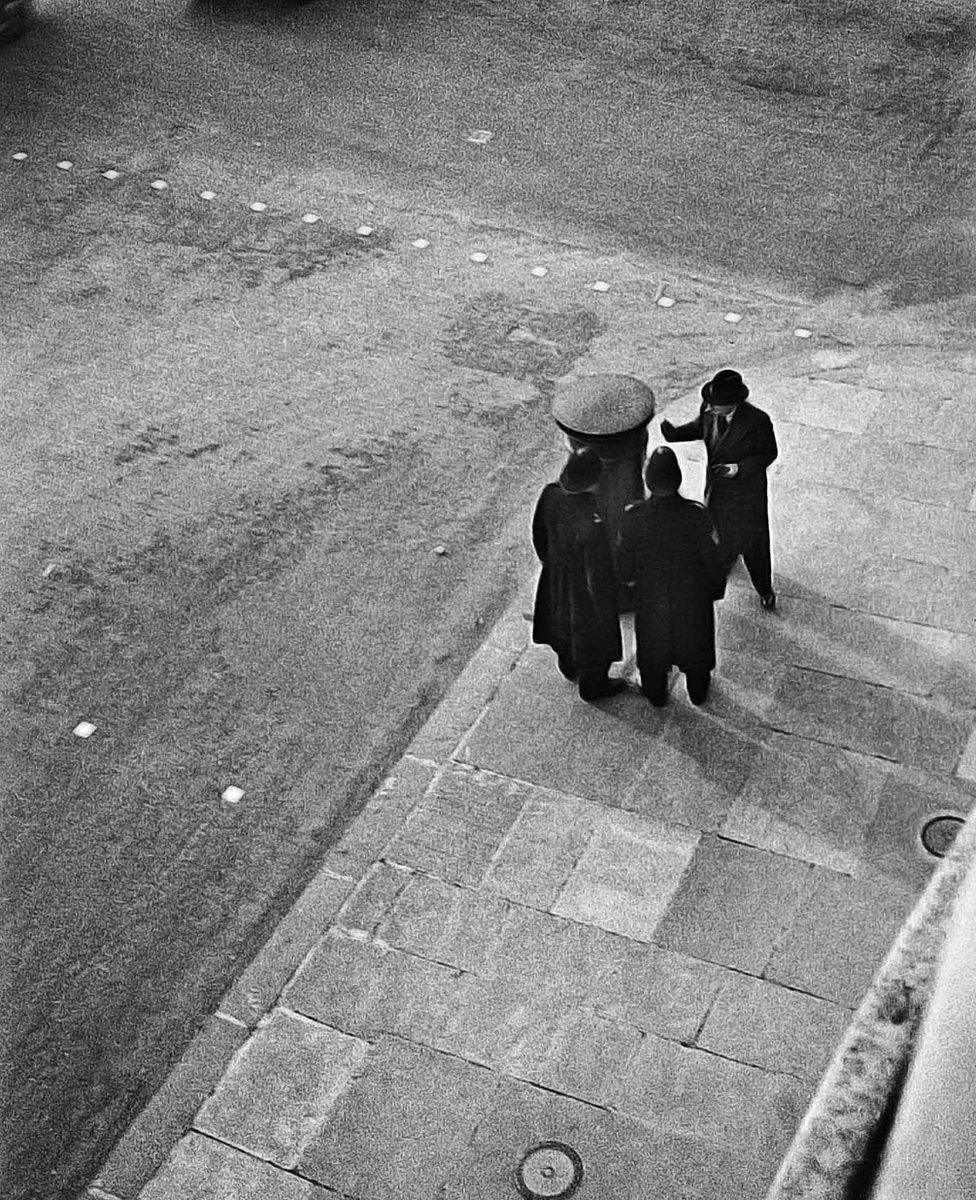
Policemen seen from above on Charlotte Street, London, 1934
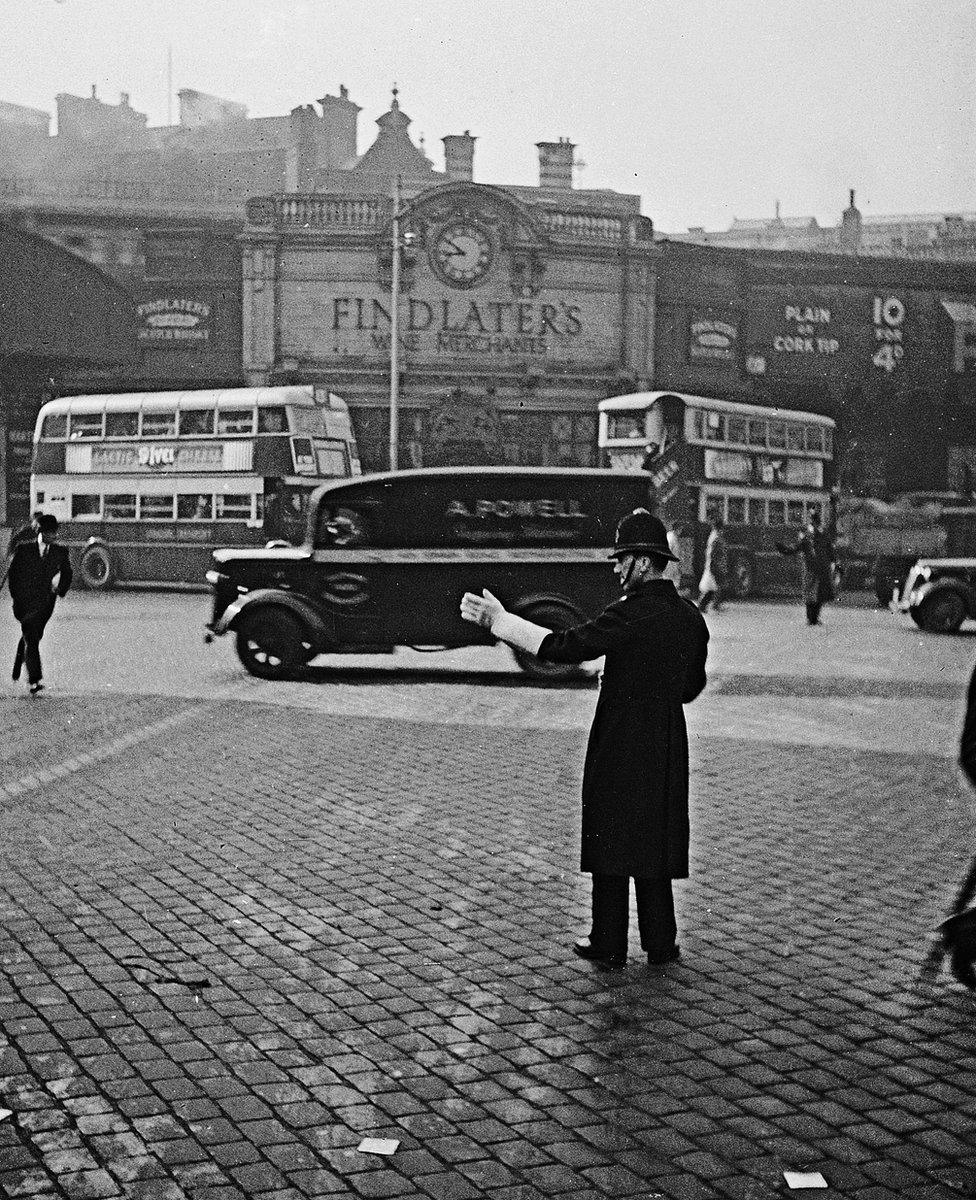
Policeman on traffic duty, London, 1937
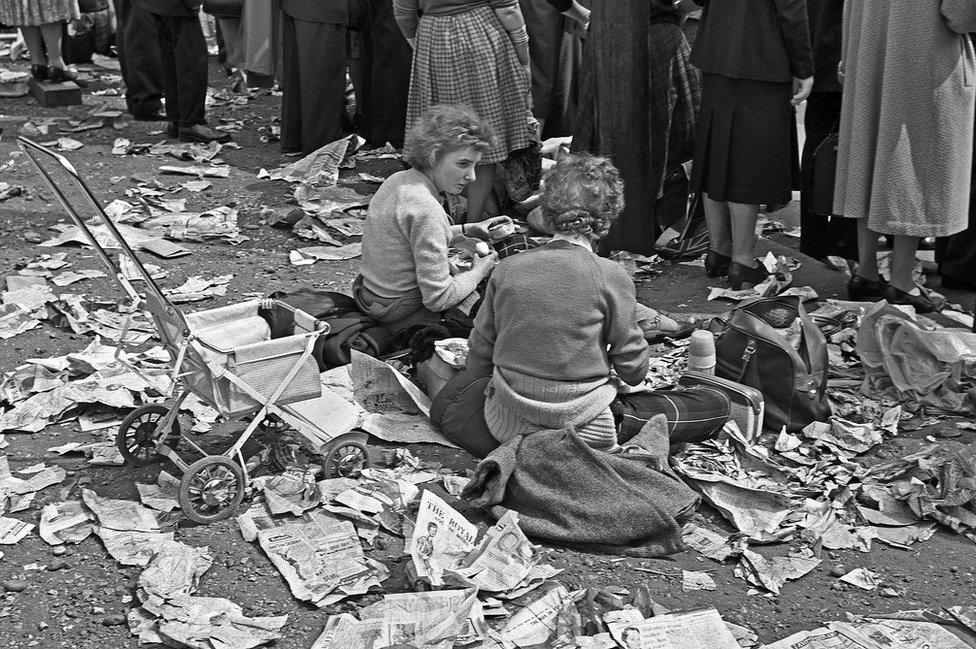
Two women enjoying a picnic amid newspapers on the ground, on 6 May 1960, when Princess Margaret married the photographer Antony Armstrong-Jones.
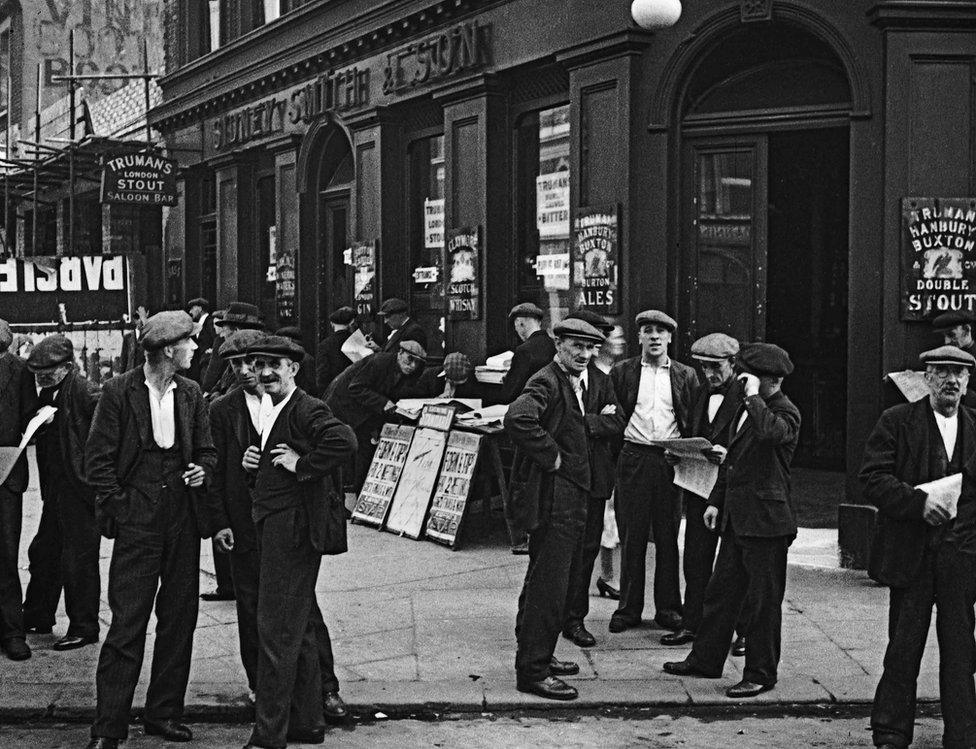
Working men gather outside a public house in Canning Town, London, 1935